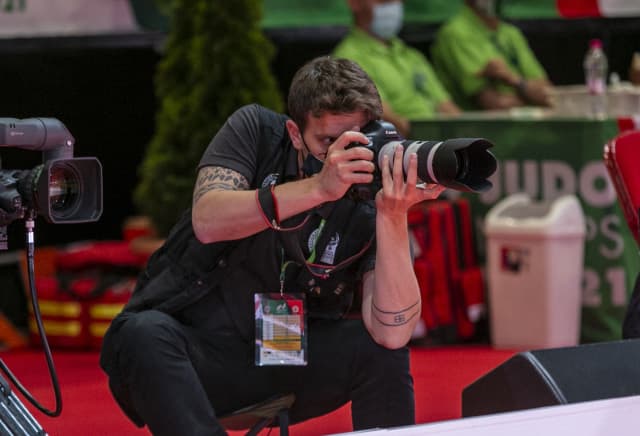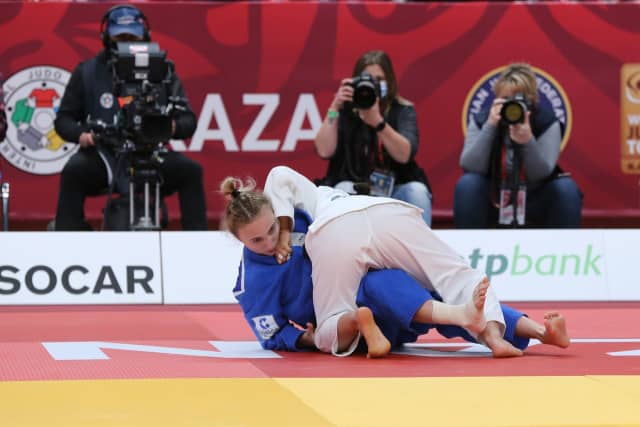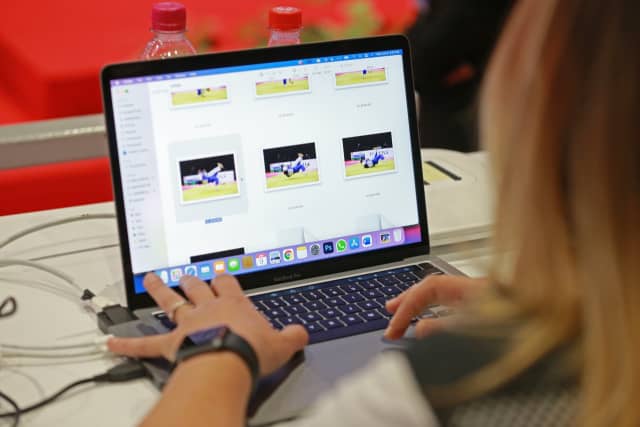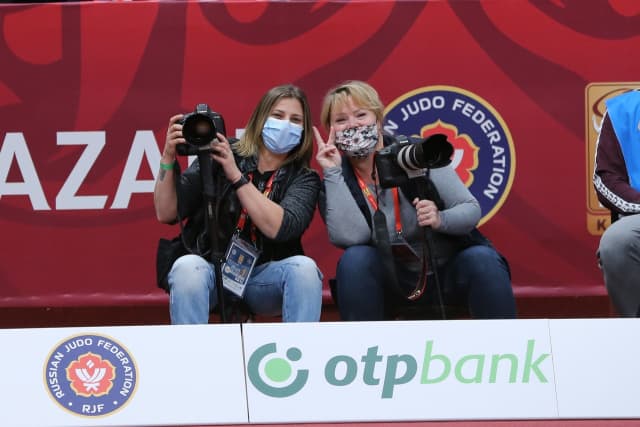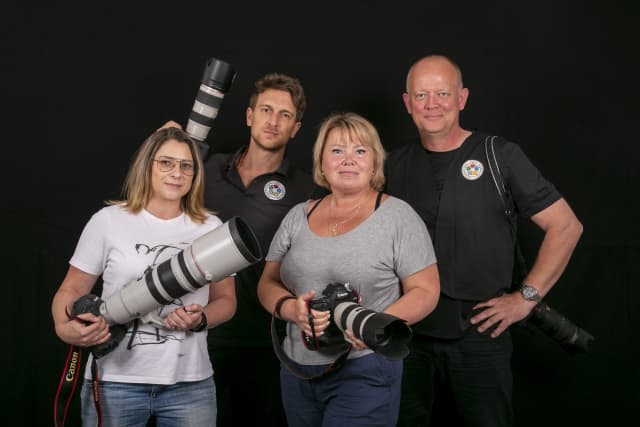
We are used to an outstanding quality of image with perfect lines and unblemished colour. We can see contorted faces describing their owners’ exact feelings in a single snapshot of time and sometimes we can even read their backstory from that perfectly selected photograph.
Producing such high quality work over and over again might lead us to become complacent, neglecting to acknowledge the process that is followed to reach such a pinnacle, but we must acknowledge it. It is the finest sports photography, it is art, it is technological progression and it is record-keeping.
Photographer X
“Usually I stay exactly in the middle because I can see both athletes and have a full view of the mat. It’s the best angle to cover everything on the tatami.”
There are hours and hours of contests each day and it’s possible to take 10 shots in a single second, so how is it possible to select the right moments, from thousands, without missing too many?
“You have the feeling that the grip is preparing something so you start shooting. A burst of photos for one throw can be 7-10 pictures. From these we choose one, the best one. Usually it’s the middle of the technique.
Settings for the camera are done in advance, with light and colour. For each venue we test the camera. During the event the lighting doesn’t change so we check at the beginning of the competition, early morning on day 1.
Checking the venue has to be the first thing we do: checking the situation for placing yourself at the mat, checking the desk space and internet connections.”
So the venue is ready and the cameras are ready. They’ve seen and felt a moment worth capturing. What next?
“The best pictures are when they are in the air or maybe we choose the very end of the exchange, so you can see the technique or the final scoring position clearly, to imply the power that was involved. We can have 100 pictures from one contest. I select 1 or 2 while it’s fresh in my memory and I remember exactly the moment I think will have the best image. Between one fight and the next I have already selected those, discarded the rest and am ready to work on the next contest.”
It is an incredible pace at which to work and at the World Championships it is more than a week of sustained, high octane work, producing the images that will form the diary entry for the athletes’ lives. From day one to day 8 the quality doesn’t change and tiredness or time constraints are not even acknowledged as possible reasons to accept less than perfection. The requirement is clear.
“On our website we have a really efficient system for uploading, with the possibility to tag them with the fight, the round, the athletes and more. By the end of each day the photos are online and can be searched for with these different criteria. We will also have provided photos, throughout the day, to our colleagues who are writing articles on site, working at the same speed as us. The team is well-practised and has clear lines of communication, to ensure that the right photos get to the right people at the right time. Due to the initial checks, the editing phase is minimal with usually just a crop and a quick check on the colour balance.”
And that’s it! From thousands of possible images, a selection of just a couple of dozen. Those images will be used and copied and saved for many years to come and most who enjoy them won’t think about the incredibly technical process that was professionally mastered by a handful of expert sports photographers. It is fitting though that the people charged with archiving such elite athletes, should be elite themselves at what they do. And they are! As evidenced in every final photo selection.

